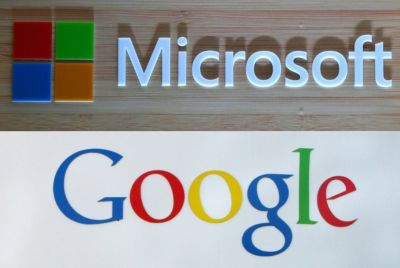AI and the Future of Employment: Are the 14,000 Amazon Layoffs a Sign of Things to Come?
As Amazon slashes 14,000 jobs in its latest restructuring, fears grow that artificial intelligence isn't just changing how we work — it's redefining who gets to work at all.

If there is one universal thing in the contemporary tech, finance, and entertainment industries in the last several years, it is the mass layoffs that some of the biggest companies have carried out. Despite not needing to do it, and even though their revenue typically rises each year, there are more and more workers who are losing their jobs due to various types of budget cuts, studio and branch shutdowns, and collective layoffs.
The reasons behind all this seem to point to one and the same culprit: artificial intelligence (AI). Is this new technology really ushering in a new era of employment? Does the recent massive layoff of 14,000 workers by none other than the biggest company of them all, Amazon, point to a new trend in business? It does seem that job security is a thing of the past, and it remains to be seen which industries will be hit the most. Join us as we explore AI and the future of having a job.
Amazon's Mass Layoffs Shake the Business World
The news of the incredible high firing of thousands of people sent shockwaves throughout some of the most profitable and growing sectors. From bitcoin and finance to esports and live sports streams, dozens of platforms, businesses, and companies took notice of this because of the scale and the key role that Amazon has across most modern industries.
On October 28, 2025, Amazon confirmed that it would eliminate about 14,000 corporate roles globally. The company has around 350,000 corporate employees out of roughly 1.56 million total worldwide, meaning the cuts represent approximately 4% of its white collar workforce.
Although 14,000 is the confirmed number for this round, reports indicate that cuts as large as 30,000 may ultimately happen down the road as part of a broader restructuring. These are staggering figures despite Amazon being a huge international company. The layoffs were carried out through internal communications, with managers trained ahead of time to handle the process and deal with the consequences.
Affected employees received formal notifications and were given about 90 days to explore other roles within the company. Those unable to find new positions will receive severance packages, extended health benefits, and job placement support. But is that enough of a security in these uncertain times? Most agree it is far from it.
Why Is This Happening?
The reason behind all of this is not the same. It is a result of the "perfect" mix of various circumstances that have culminated in recent months and years. Since 2020, it has been a tumultuous period for everyone, the consequences of which are only now starting to show.
Pandemic era over hiring and cost discipline
A major driver is Amazon's admission that it expanded too aggressively during the COVID-19 pandemic. The surge in online shopping prompted the company to add tens of thousands of corporate employees to meet the rising demand. As the post pandemic economy normalised, that staffing level became unsustainable. This latest wave of cuts is essentially a correction that aligns the workforce with the company's long term needs and current economic realities.
Structural and cultural change
Amazon's leadership has also framed the layoffs as part of a cultural reset. CEO Andy Jassy and other executives have described the move as an effort to flatten the organisation, eliminate unnecessary bureaucracy, and empower teams with greater ownership. Jassy emphasised that this restructuring is less about cost or automation right now, and more about improving agility and accountability within the company. The goal is a leaner organisation that can make faster decisions and better support innovation in key areas such as retail, cloud, and logistics.
Artificial Intelligence and automation
Artificial intelligence is the usual suspect that gets most of the blame, but evidently, it is not the only reason why layoffs are happening. It actually plays a subtler, yet significant, role in the whole thing. Earlier in 2025, Jassy told employees that Amazon's increasing use of AI and automation would "reduce the need for certain types of corporate work over time."
The company has been aggressively investing in generative AI technologies, machine learning (ML) infrastructure, and AI powered logistics systems.
These investments are reshaping how teams function, with some traditional roles becoming redundant as AI takes over data analysis, forecasting, and customer service operations. Furthermore, in its October announcement, Amazon reiterated that the cuts are part of reallocating resources toward its biggest bets, particularly AI, cloud computing, and automation.
While the company maintains that AI is not the primary cause of this specific round, it is clear to everyone that automation is influencing which roles are scaled back and where future growth will occur.
Who is impacted?
The layoffs primarily target Amazon's corporate and office employees, rather than warehouse or fulfillment center staff. Divisions affected include Human Resources (People Experience & Technology), Devices and Services, Operations Support, Advertising, and parts of Amazon Web Services (AWS). Insiders have reported that the largest number of cuts occurred among software engineers, business analysts, recruiters, and mid level managers. In some cases, AI driven tools and systems have made portions of these roles redundant.
For instance, recruitment functions have been partially automated with ML systems that screen and evaluate job candidates. Similarly, data analytics and marketing teams are being restructured as AI tools increasingly handle performance tracking, customer targeting, and content optimisation. In total, the layoffs represent about 4% of Amazon's corporate workforce, but if the larger 30,000 job estimate comes to fruition, that figure could easily surpass 9%.
What Artificial Intelligence Does Amazon Already Use?
Over the past several years, Amazon has substantially deepened the integration of artificial intelligence across virtually every aspect of its business, advancing both external customer facing offerings and internal operational efficiencies. From its earliest days working with ML models on recommendation engines and logistics optimization, Amazon now uses AI not to tailor shopping experiences on its retail platform and drive automation in warehouse fulfillment.
The tech also powers its cloud computing services through Amazon Web Services (AWS) and forges entirely new product lines and hardware innovations. The company has been using state of the art AI and ML models for more than twenty five years in areas such as personalized shopping, warehouse robotics, and supply chain optimization. The latest solutions continue to improve the customer experience while lowering costs and improving efficiency.
In the retail domain, Amazon applies AI systems to anticipate customer demand, optimize its vast fulfillment and delivery networks, and personalize product selection and marketing. These algorithms leverage the enormous historical data that Amazon has accumulated, enabling the company to more accurately predict what items customers will buy, how much inventory to hold, and where to position that inventory in its distribution network.
A key strategic shift for Amazon has been the vertical integration of AI hardware and infrastructure. Recognizing that AI training and inference at scale require massive computational resources, Amazon has developed its own custom chips, such as the Trainium and Inferentia families, designed to reduce dependency on external providers, lower costs, improve energy efficiency, and deliver competitive performance in its cloud services. Amazon emphasizes responsible AI principles that stress fairness, explainability, privacy, security, safety, controllability, robustness, governance, and transparency.
Amazon FAQs
- When and how was Amazon founded?
Amazon was founded by Jeff Bezos in 1994 in his garage in Bellevue, Washington. It started as an online bookstore called "Cadabra," but Bezos soon changed the name to Amazon after the world's largest river, symbolizing vastness and variety.
- What was the first item ever sold on Amazon?
The first item ever sold on Amazon was a book titled Fluid Concepts and Creative Analogies by Douglas Hofstadter in July 1995. That sale marked the beginning of Amazon's journey as the world's largest online retailer.
- What does the Amazon logo mean?
The Amazon logo features an arrow from A to Z, symbolizing that the company sells everything from A to Z. The arrow also forms a smile, representing customer satisfaction.
- How does Amazon use artificial intelligence?
Amazon uses AI almost everywhere, from Alexa (its voice assistant) to recommendation engines, automated warehouses, drone delivery prototypes, and even fraud detection systems. AI is a big reason behind Amazon's personalization and efficiency.
© Copyright IBTimes 2025. All rights reserved.





















